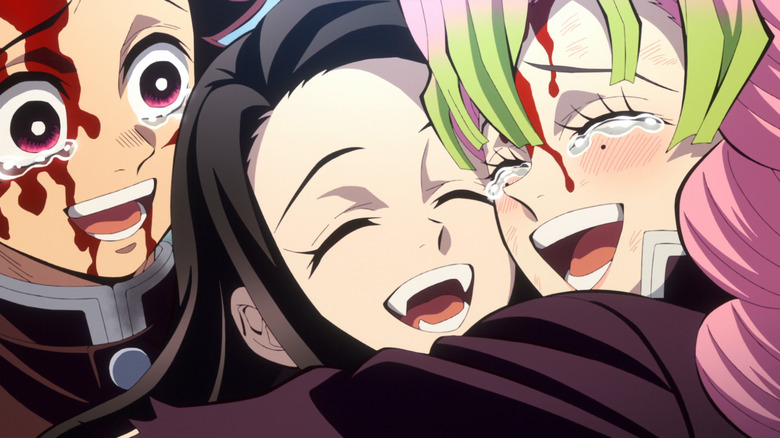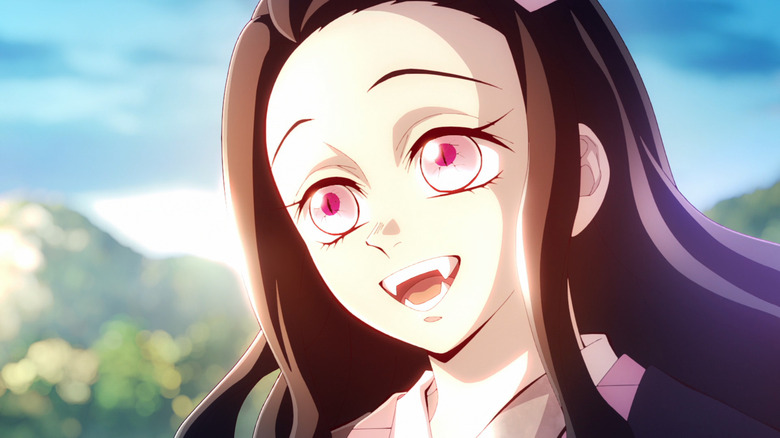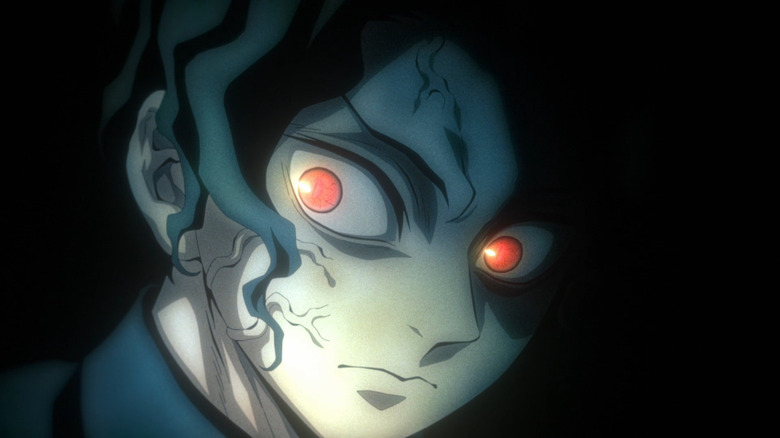Demon Slayer Season 3: How [SPOILER] Lived Theories & How They Connect To Vampire Lore
This article contains spoilers for the Season 3 finale of Demon Slayer
"Demon Slayer" went as big as it possibly could for The Swordsmith Village Arc in Season 3. As with Season 2, those who are watching for the incredible animation and blistering action sequences had plenty to dig into and enjoy. Almost half the season was taken up by intense battles between the Hashira and Upper Four Hantengu (Toshio Furukawa/Christoper Corey Smith) and Upper Five Gyokko (Kosuke Toriumi/Brent Mukai).
Still, perhaps the biggest moment of all in the "Demon Slayer" Season 3 finale came after all of the fighting was over, as Tanjiro Kamado (Natsuki Hanae/Zach Aguilar) was mourning the passing of Nezuko (Akari Kito/Abby Trott). However, while he thought that his sister had burned to death in the light of day, it turns out that she had instead been largely cured of her demon blood and can now even speak like a regular human again.
Maybe the biggest revelation of all, though, is that she is now free to walk in the daylight with the other Hashira. However, this joyful news becomes a double-edged sword when we see how Muzan (Toshiheko Seki/Greg Chun) reacts to the news that Nezuko has beaten him out by achieving his lifelong dream of being able to move among the mortals by day.
Nezuko has fulfilled Muzan's 1000-year dream
Given that the Season 3 finale of "Demon Slayer" is more than twice as long as an average episode of the series, plenty of new information comes to light even after Hantengu has finally been defeated. For instance, Muzan has mentioned in the past that he wants the Upper-Rank demons to find him something called Blue Spider Lily, but we never learn why until the closing moments of Season 3.
As revealed in his backstory, Muzan was once a sickly young man who was born with a strange affliction that not only made him weak but also forced him to stay inside most of the time. As the spiteful Muzan grew increasingly impatient with his doctor, he finally snapped and killed him, only to find that the doctor's latest mystery concoction had cured him at last — by turning him into a demon.
However, Muzan could still not walk in the daylight, despite his enhanced strength and durability, and with the doctor dead, he only knew that Blue Spider Lily was one of the ingredients that had gone into making the formula. This explains both what Muzan's experiments are all about and what his goal has been all along in spreading the demon plague: a perfect cure that will allow him to keep his power but also let him walk in the daylight.
How this connects Demon Slayer with vampire lore
Still, what makes these revelations especially interesting is how they connect "Demon Slayer" with classic vampire lore. While it could be argued that their fangs, transformations, regenerative abilities, speed, and agility could already make the demons in the series fairly close to vampires, Season 3, Episode 11 ("A Connected Bond: Daybreak and First Light") cements this connection in a few key ways.
Most noticeably, the fact that Muzan waited 1,000 years for Nezuko to appear draws a parallel with Dracula's motivations in "Bram Stoker's Dracula." Though there's a much more sinister undertone, it's a pretty easy comparison to make, being that Muzan wants to consume Nezuko rather than make her his bride.
However, "Demon Slayer" also connects itself with a much more modern vampire story with "Blade." After all, like the titular half-vampire half-human played by Wesley Snipes, it turns out that Nezuko is a daywalker and is both despised and coveted by the leader of the demons as a result.
With "Demon Slayer" looking to have two seasons left as it finishes out its remaining arcs, it looks like there's going to be a careful balance to Nezuko's transformation. While she will undoubtedly be more useful to the Hashira than ever, she could also spell their doom if she falls into Muzan's hands before the final battle is concluded.


